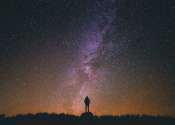Our galaxy's 'geysers' are towers of power
"Monster" outflows of charged particles from the centre of our Galaxy, stretching more than halfway across the sky, have been detected and mapped with CSIRO's 64-m Parkes radio telescope. Corresponding to the "Fermi Bubbles" ...








